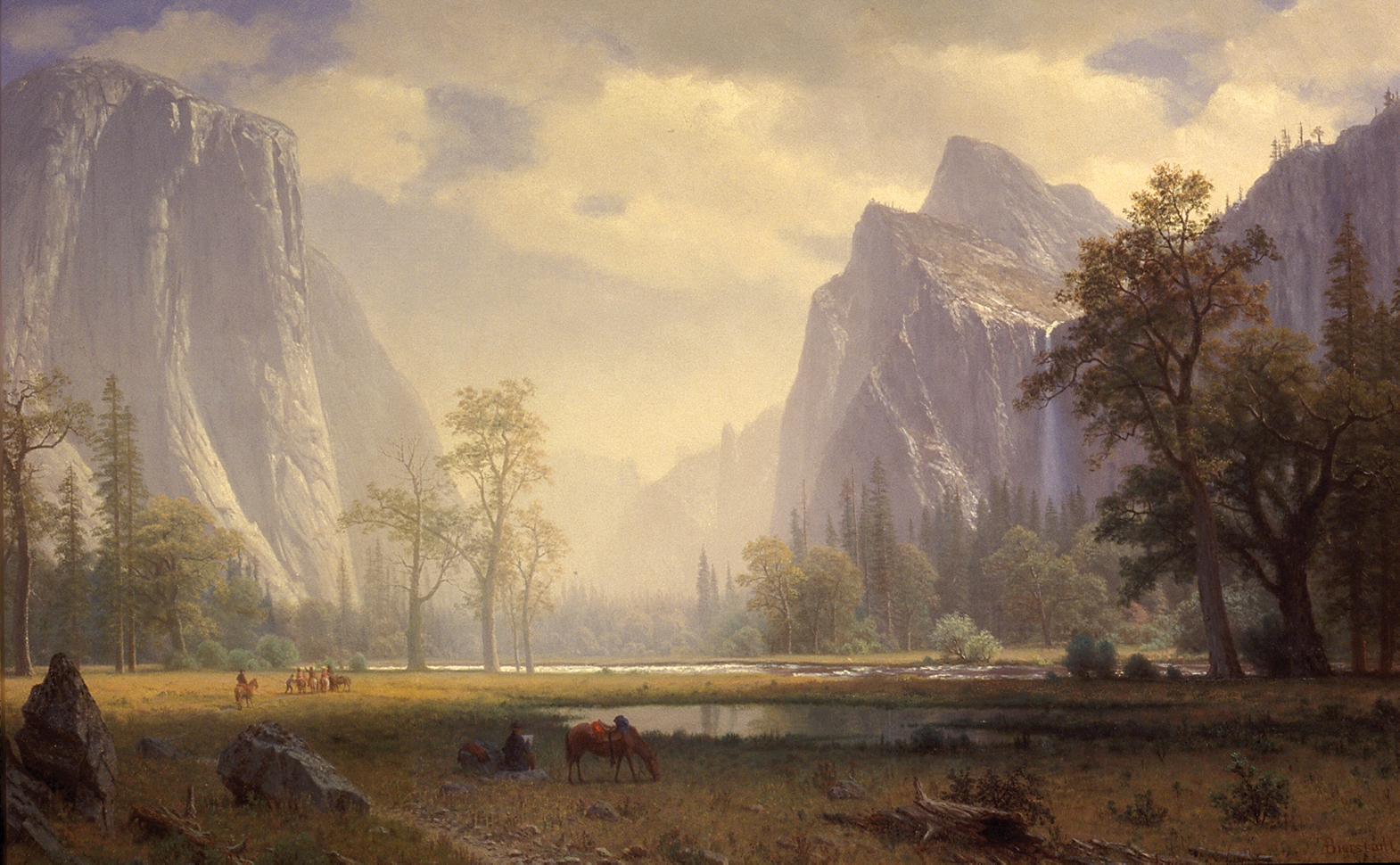Bierstadt visited Yosemite Valley in summer 1863, when he traveled there with journalist Fitz Hugh Ludlow and artists Virgil Williams (1830-1886) and Enoch Wood Perry (1831-1915).
Looking up the Yosemite Valley shows a view from the western end of the park. The artist used striking contrasts of shadow and sunshine to dramatize and vary his scene; the foreground is dimmed, while sunlight bursts onto the green meadow, silvery blue El Capitan on the left, and Cathedral Rocks on the right. The mistiness of the distant reaches of the valley focuses attention on these two granite monuments. Of secondary interest are Bridalveil Falls, in a shaded cliff on the right, and an exploring party in an open meadow ribboned by the Merced River. The shadowy foreground contains an artist-perhaps Bierstadt himself-sketching the view. The tiny figures in the middle ground, like the trees that fringe the south rim, help convey a feeling of grandeur, as does the low viewpoint that emphasizes height.
Bierstadt was among the earliest wave of visitors to Yosemite after two trails for saddle animals were completed in 1855, only four years after the first reports of the valley’s beauty by members of the Mariposa Battalion who entered it to subdue the Ahwanichee Indians. By 1863 there were a saloon and modest hotel, and the first geological survey of the valley was undertaken. In 1864 Frederick Law Olmsted led a successful lobbying effort to preserve Yosemite as a park. A few years later, with the completion of transcontinental railroad and stagecoach service to Yosemite, tourists began to arrive by the thousands. Nonetheless, Bierstadt always painted Yosemite as an uncontaminated natural paradise.
Bierstadt’s first major Yosemite paintings predate the influx of tourism. His views must have struck the public with the force of revelation, or at least confirmation. Along with reproductions of the drawings of Thomas Almond Ayres (c. 1816-1858) in the 1850s and the photographs of Carleton E. Watkins and Eadweard Muybridge (1830-1904) in the 1860s, Bierstadt’s paintings were proof of the awestruck pronouncements of journalist Horace Greeley in 1859 and nature writer Thomas Starr King in 1861.
Although a handful of California painters had depicted Yosemite, Bierstadt’s oils were the first large-scale color views shown to the Eastern public. Thus, he can be credited with establishing Yosemite as a serious landscape subject, although his lead was quickly followed by other painters, who soon saturated the market with views of the valley. Bierstadt returned to Yosemite three times in 1872 and 1873 to gather fresh material. In all, he made at least twenty-five Yosemite paintings (including six studies); most, like this work, are undated. A few bear dates between 1863 and 1875, suggesting the most likely period for the Haggin painting.


